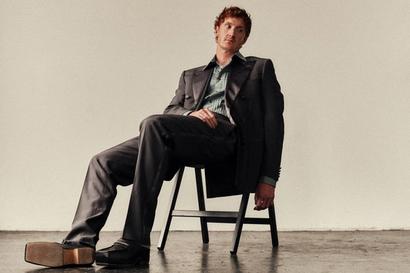

Words: Joseph Bullmore
It’s sometimes said of David Yarrow — in a quote pinched from one of his heroes, Ansel Adams — that he doesn’t so much take images as make them. But perhaps this doesn’t tell the entire story. David Yarrow doesn’t just make pictures — he makes them and then releases them. I can think of no other photographer in the world whose new works are unveiled with the pomp and excitement of a new album launch, say, or a Wall Street IPO. But for Yarrow, less really is more. In a good year, he’ll produce maybe five photographs — an act of almost anarchic restraint in this world of emetic, constant content, and one that creates a kind of unique scarcity value. But each shot is well worth the wait. Here, the photographer takes us behind the scenes on his most striking creation yet, the playfully titled ‘Catwalk’ — a striking, cinematic piece captured in South Africa in the Northern Pretoria sanctuary of ‘Lion Whisperer’ Kevin Richardson.
DY: I think photography has many problems. And one of them is that photographers tend to release too many photographs. It’s almost like a stock dump. The world sees too many photographs, and there’s too much content. I would prefer to spend a week and £100,000 to get a picture that really does stop people in their tracks, as opposed to taking 10 pictures that are okay, but which aren’t really any different to what we’ve seen before. That’s maybe my fourth strong picture this year. And I’m going to Antarctica in two weeks. If I can finish the year with five strong pictures, that’s kind of what I set out to do.
I’m not a wildlife photographer. If somebody wants to really piss me off, they’ll call me a wildlife photographer. I’m just a photographer. There’s so many of these self-appointed wildlife photographers that are calling generic pulp. And I want to be as far from that as possible.
We got very lucky with this photo for two reasons. We got lucky with the consistency of the weather: we couldn’t do that shot over one day — it was a programme of things coming together. So if you had totally inconsistent weather, it would be very difficult to merge the pictures as one.
That lion will kill anyone that’s in the picture in a heartbeat. So the first thing we had to do was get the Zulus into a stand — fet them to sing, get them to be animated, and get the photo of them. Then we had to whisk the photo to Johannesburg, get someone there to print a massive canvas of it, have it erected in the same position they were in the shot, and then have the lion coming towards me. Nobody was at threat then. But with the wonders of modern photography, there’s sufficient distance between the lions and the people in the shot that you can’t tell if they’re two dimensional or three dimensional.
The second bit of luck I had was with the zulus. When they get together they’re quite energised, and they enjoy each other’s company, and they’re getting paid. But I needed two strong leads. The two girls that we had at the front are strong in different ways. One is very feminine, one is very strong. In a picture like that, where they’re the second most important thing in the picture, if one of them is weak, the whole photo’s gone. And they’re both strong.
On a shoot like that, the lion gets tired and he gets pissed off. So you’ve only got a limited amount of time. I need him to look magnificent and to be looking right towards me. The only thing that’s between me and the lion is a cage. But we got it — and the picture works.
The whole cinematic concept of ‘thirds’ doesn’t work in a picture like this. If the lion is not central, I think it causes you visual stress. But if the lion is bang central it makes it a more pleasing photograph. This is art. It’s not reality.
I did an assignment in Vancouver Island recently where I spent $45,000 and didn’t take a single picture. So that didn’t go very well. You have to fail. Failure is a huge part of success. Pictures like that don’t come easy, otherwise other people would try to do them. I like the degree of visual chaos, and I like pictures you can look at for a long time. Even though the Zulus are so out of focus that they’re abstract, it actually adds to the picture. Focus either includes or excludes. And if it excludes, it adds narrative. I’m excited to see the picture being shown at Maddox Gallery. I think it will stop people in its tracks.
‘Changing Lanes’ by David Yarrow will be available to view from the 19th December at Maddox Gallery. maddoxgallery.com


